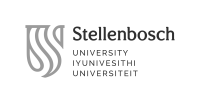F2416 Physics of Society, Cities and States
Professors
Schedule
Description and objectives of the course
The aim of this course is to find challenges due to the rapid urbanization and social development of the cities. The cities growth increasingly depends on environmental and social issues. Especially energy supply, decreasing pollution and sustainable development needs to be supported by the society. Modelling the evolution of cities and their society is very important. Namely policy makers need simple theories with new paradigms for solving described problems. The objective of this course is to gain an in-depth knowledge of the city and society physics. The focus is given on the application of physical methods to these systems.
Content:
1. Determination of cities and society sizes
2. Spatial organization of cities and society
3. Spatial distribution of the city and society
4. Segregation and physics
5. Mobility
6. Energy production
7. Energy consumption by the states
8. City noise and impact on human health
9. Urban lighting
10. Transport of pollutants
11. Cities climate and its change
12. Growth rate of the population, demographic modelling
13. Gas emission by cars in cities
14. The context of the society
Competences:
• Knowledge of the society and city dynamics
• Knowledge in society development
• Understanding of physic for this situation
• Knowledge in the mobility
• An efficient translation of scientific research expertise into practical situations
Learning outcomes of the course
1. The ability to gain deeper knowledge of the society development
2. The ability to identify main problems in the society
3. The ability to translate theoretical knowledge into practice
4. The ability to learn measuring techniques and equipment
5. Get acquainted with new trends in the field
6. Get deeper inside of the problems in the context of the society
Teaching and evaluation methods
• Lectures and seminars.
• The seminar is based on scientific literature in the field
• Presentations of seminars to other students in the group, critical evaluation of the scientific literature
• Individual work with students.
Presentation and defense of the seminar (50% of the note), Oral exam (50% of the note).
Bibliography
1. M. Batty, The new science of cities, Cambridge: MIT Press, 2013.
2. M. Barthelemy, The structure and dynamics of cities, Cambridge: Cambridge University Press, 2016
3. C. Castellano, S. Fortunato and V. Loreto, "Statistical physics of social dynamics,"
Reviews of modern physics, vol. 81, no. 2, p. 591, 2009.
4. E. Boeker, R. van Grondelle, Environmental Physics, Willey, 2011.
Required preliminary knowledge
Basics of natural sciences like physics
Last updated: February 14, 2024


















